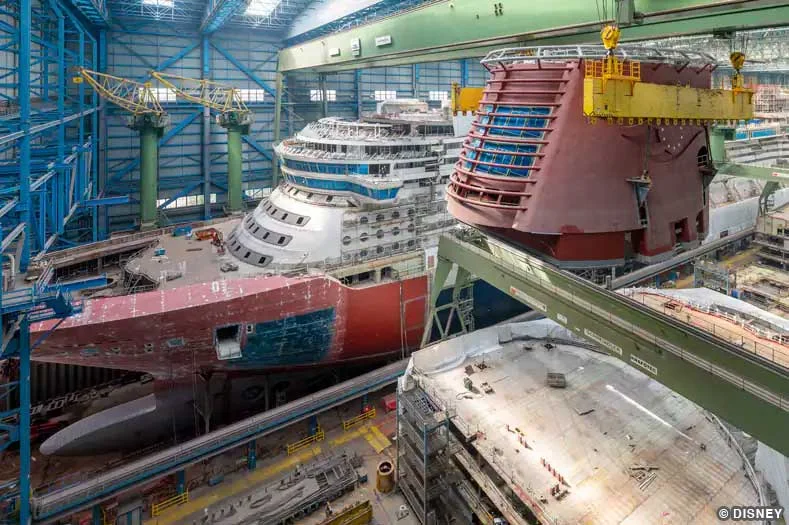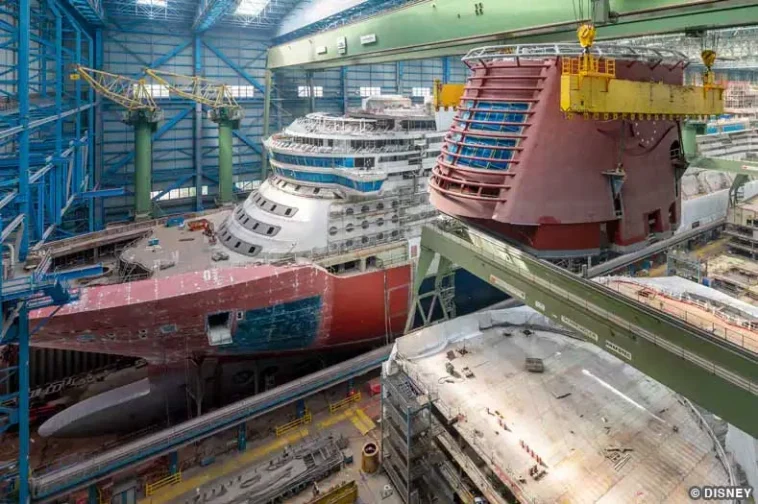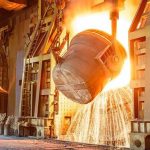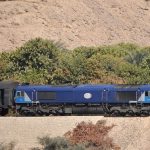
Disney Cruise Line’s Bold Expansion: A New Era for Family Cruises
Disney Cruise Line’s decision to commence construction on the fourth ship of its Wish class marks a pivotal moment not only for the company but also for the broader cruise industry. At a recent steel-cutting ceremony held at the Meyer Werft shipyard in Papenburg, Germany, key figures from Disney Signature Experiences, Walt Disney Imagineering, and Meyer Werft gathered to celebrate the start of construction. This event symbolizes more than just the beginnings of a new vessel—it stands as a testament to the company’s commitment to growth, innovation, and the future of family leisure travel.
For many industry observers, this development is a clear indicator of Disney’s ambitious expansion strategy as it plans to introduce four new ships between 2027 and 2031. Each vessel is expected to share common features, including a capacity of 4,000 guests, a gross tonnage of approximately 144,000, and an environmentally friendly design powered by LNG (liquefied natural gas). As the cruise industry faces its own set of tricky parts and tangled issues, Disney’s approach offers valuable insights into how major players can tackle overwhelming projects while keeping customer experience front and center.
Innovative LNG-Powered Cruise Ship Technology and Environmental Impact
One of the most remarkable aspects of Disney’s new cruise ship is its use of LNG as an eco-friendly fuel source. By adopting LNG power, the company hopes to reduce harmful emissions and usher in a new era of sustainable cruising. This initiative is super important for an industry that is continuously trying to balance the need for growth with the imperative of environmental responsibility.
The LNG-powered design is not just about reducing the environmental footprint—it also stands as a shining example of how combining traditional marine engineering with modern, green technologies can resolve some of the intimidating, confusing bits of ship construction. Industry experts have noted that while integrating LNG systems into a vessel of such size involves complicated pieces of engineering, the potential benefits for reducing air pollution and lowering operational costs are substantial.
- Reduces harmful emissions by cutting down on nitrogen oxides and sulfur oxides.
- Helps cruise companies meet increasingly strict environmental regulations.
- Offers a model for sustainable ship design that other manufacturers may soon adopt.
This innovative approach also provides a supportive framework for discussions about the future of maritime travel. As governments around the world impose tougher regulations on emissions, which can be nerve-racking for traditional shipbuilders, Disney’s strategy may pave the way for others who wish to get around these challenges with a mix of tradition and technological flair.
Economic Ripples: Impact on Tourism, Small Businesses, and Local Economies
The launch of a new cruise ship is always a major event with wide-reaching economic implications. In the case of Disney Cruise Line’s latest venture, the ripple effects span across various sectors, including tourism, small business retailing, and local economies. As these new vessels are designed to host thousands of guests, many local ports and related service providers can expect an influx of tourism-related activities.
Local small businesses, in particular, stand to benefit from the increased patronage driven by new cruise itineraries. Whether it’s local restaurants, souvenir shops, or transportation services, the expansion of Disney’s fleet could contribute to revitalizing some community economies that have been full of problems in managing their tourism infrastructure. In essence, Disney’s new ship is not only a step forward for the cruise line but also a boost to many other sectors that rely on the steady flow of tourists.
| Sector | Potential Benefits |
|---|---|
| Local Tourism | Increased visitor numbers and extended stays. |
| Small Businesses | Higher customer traffic, increased sales, and job creation. |
| Port Municipalities | Revenue from port fees and improved infrastructure investment. |
| Service Industries | Enhanced demand in hospitality, culinary, and entertainment services. |
This wave of economic activity is a welcome respite at a time when many local and small-scale businesses are working through the twists and turns of recovering from recent global economic downturns. By stimulating demand in these sectors, the new cruise ship project demonstrates how large-scale industrial initiatives can have a ripple effect that supports various layers of the economy. Decision-makers and community planners might take a closer look at this approach to figure a path forward for sustainable growth in similar industries.
How Disney’s Fleet Expansion is Tackling the Tricky Parts of Cruise Ship Construction
When it comes to constructing mega vessels such as those in the Disney Wish class, there are numerous tricky parts and tangled issues to manage. These projects require the coordination of countless moving pieces—from engineering and design to regulatory compliance and aesthetics. While the first cut of the steel for the new ship might appear as a symbolic gesture, it is also a critical milestone that sets the stage for many complicated pieces ahead.
The process of bringing such a colossal vessel to life involves dealing with various intimidating, off-putting challenges, including:
- Designing spaces that cater to diverse guest needs while upholding Disney’s high standards of entertainment and luxury.
- Integrating modern, LNG-powered systems seamlessly with traditional marine technologies.
- Managing the supply chain and logistics required to source sophisticated components from around the globe.
- Coordinating between multiple stakeholders, each with their own set of priorities and contributions, from creative directors to shipyard engineers.
Each of these areas brings its own set of confusing bits and complicated pieces that must be addressed methodically. However, Disney’s robust experience in managing large-scale projects and aligning innovative touches with timeless family entertainment gives the company a good track record of نجاح. The meticulous planning and forward-thinking approach evident in the steel-cutting ceremony signal that the company is ready to take on these challenges with a blend of practicality and showmanship.
The Digital Revolution: Advanced Technology Behind Disney’s Cruise Innovations
Another key aspect of Disney’s new vessel is the incorporation of advanced digital technologies in its design and operational management. In today’s fast-paced world, the digital revolution is transforming industries, and cruise ship building is no exception. The integration of sophisticated software for design, simulation, and even guest management stands out as a modern twist that separates today’s generation of ships from those of the past.
As the cruise line works through the fine points of integrating technology with traditional building practices, there are several digital innovations that are emerging as super important components of this process:
- Smart Design Integration: Using digital modeling, the design team can get into the nitty-gritty of creating efficient layouts that maximize space usage and guest comfort.
- Real-Time Construction Monitoring: Advanced sensors and Internet-of-Things (IoT) devices allow project managers to keep track of progress, manage resources, and detect issues early in the construction process.
- Virtual Reality (VR) Simulations: VR technology helps stakeholders visualize the completed ship, making it easier to identify any subtle details or slight differences that could affect the final product.
- Data Analytics: Through detailed analytics, Disney can assess all aspects of ship operations—from energy consumption to passenger movement—ensuring that every system operates at peak efficiency.
These digital tools represent the kind of modern upgrades that enable the cruise industry to steer through the tricky parts of large-scale construction. While traditional shipbuilding is loaded with its own set of engineering and logistical puzzles, the ability to get into advanced data solutions allows companies like Disney to make more informed, real-time decisions. The outcome is a vessel that isn’t just a floating resort but a marvel of modern engineering and innovation.
Looking Ahead: Future Challenges and Opportunities in Cruise Ship Manufacturing
The announcement of the new Disney Cruise Line ship comes with a mix of excitement and cautious optimism. While the project holds an enormous promise, there are several uncertain, on-edge areas that warrant a closer look. The cruise industry, like many sectors facing substantial technological and environmental shifts, must continually adapt to new challenges. Here are some key opportunities and obstacles that Disney and other major players may face in the years ahead:
- Technological Advancements: As digital and green technologies continue to evolve rapidly, staying ahead in innovation will be a constant race. The ability to integrate more sophisticated systems will be a critical, must-have factor for success.
- Regulatory Changes: Environmental and safety regulations are continuously changing, and meeting these standards can sometimes be nerve-racking. Companies will need to maintain flexibility to tweak designs and processes as needed.
- Market Competition: The cruise industry is full of competitors who are also striving to incorporate the latest innovations. This competition pushes companies to raise the bar, offering enhanced experiences to win over customers.
- Economic Uncertainty: Global economic shifts can have a significant impact on costly projects such as cruise ship construction. Fluctuations in economic conditions can affect everything from raw materials pricing to consumer spending on leisure travel.
Despite these challenges, the future looks promising. Companies with the right blend of traditional expertise and digital savvy are well positioned to grow in a market that is eager for both innovation and reliability. Disney’s strategic blueprint for expansion—featuring LNG-powered systems, advanced digital tools, and an expansion plan that spans several years—is a case in point. It demonstrates that large-scale projects, even with their intimidating steps and confusing bits, can succeed with clear planning and exceptional execution.
Bridging the Gap Between Tradition and Innovation on the High Seas
One of the most compelling aspects of Disney Cruise Line’s new project is how it bridges the gap between time-honored cruise traditions and cutting-edge technology. The company has long been synonymous with family fun and unforgettable experiences at sea. Yet, the modern market also demands eco-friendly operations, digital interactivity, and speedy service—all while managing the tiny twists that make a difference in guest satisfaction.
This delicate balance is crucial when it comes to managing projects that are both artistically driven and engineering heavy. Many of the challenges in contemporary cruise ship construction are not just about building a larger vessel—they’re about ensuring that every element, from design aesthetics to technical infrastructure, works in harmony. In doing so, Disney must figure a path through various daunting, confusing bits and rough touches along the way. However, by leveraging decades of maritime knowledge alongside modern software and sustainable practices, they manage to create ships that are much more than just punts on the water.
For industry analysts, this synthesis of tradition and technology sparks interesting debates. Can a ship that is rooted in classic Disney storytelling also serve as a platform for digital innovation? The answer appears to be yes. Digital interactivity—ranging from onboard mobile applications to integrated VR setups—allows guests to personalize their experience in ways that were unimaginable in older vessels. At the same time, the ship’s LNG-driven engine illustrates that even established industries can adapt to meet contemporary environmental challenges.
Strategic Expansion and Its Ripple Effects on the Cruise Ecosystem
Disney’s ambitious expansion plan is not only a testament to its own growth but also an accelerator for the entire cruise ecosystem. As Disney launches new vessels in key locations—like the upcoming homeports in Fort Lauderdale, Singapore, and even the future introduction in Japan through a strategic collaboration—all parts of the industry can expect to see renewed momentum.
The expansion plan carries with it several important implications:
- Boost in Host Ports: New homeport locations invite massive local developments ranging from improved port infrastructure to enhanced tourism offerings. Each host city benefits from reversed economic trends as more guests pass through their ports.
- Investment in Support Services: Shipyards, marine equipment suppliers, and design studios all see opportunities in an environment that demands higher quality and newer technology, thereby creating a healthy sensitivity to innovation and growth.
- Enhanced Consumer Confidence: When a renowned brand like Disney invests heavily in its cruise fleet, it sends out a strong market signal about the viability and long-term potential of cruising as a leisure option. This, in turn, helps restore consumer faith in an industry that has historically battled with public perception challenges after global disruptions.
The ripple effects extend well beyond the confines of the immediate cruise sector. Small businesses, from tour operators to local artisans, gain exposure to an international audience. With economic benefits distributed across multiple layers of the ecosystem, Disney’s expansion model functions as an effective blueprint for stimulating broader economic growth in connected regions.
Future Lessons: Working Through the Nitty-Gritty of Mega Projects
Disney’s new ship construction sheds light on several lessons that other companies in the industrial manufacturing and leisure sectors might consider. The execution of mega projects, especially ones that involve multiple layers of complexity, requires not only significant resources but a unique mix of creativity and technological integration. As companies face the nerve-racking task of turning vision into reality, there are a few key takeaways to keep in mind:
- Clear Communication and Leadership: Effective project leadership is essential to steer through the twists and turns of large-scale projects. Leaders need to guide diverse teams while managing subtle details and aligning them with the overarching strategic vision.
- Investment in Innovation: Embracing new technologies and sustainable solutions is not just a trend—it’s a necessity. By prioritizing digital integration and eco-friendly practices, companies can significantly mitigate some of the daunting, overwhelming challenges inherent in modern construction.
- Collaboration Across Disciplines: Achieving breakthroughs in ship building or similar industrial endeavors often requires a cross-disciplinary approach. In Disney’s case, collaboration among marine engineers, environmental experts, digital architects, and creative visionaries has combined various perspectives to manage tangled issues effectively.
- Flexibility in Design and Process: No project is immune to unforeseen challenges. A flexible approach allows teams to adapt quickly—a must-have trait when navigating through intricate regulatory setups or shifting market conditions.
These lessons are more than mere guidelines—they form the backbone of what successful project management looks like in industries that are continuously evolving. The integration of traditional methods with digital innovations offers a practical roadmap for getting around many of the complicated pieces that can otherwise hold a project back.
Conclusion: Steering Through a Changing Cruise Landscape
Disney Cruise Line’s announcement of a new LNG-powered, state-of-the-art ship is a significant marker of progress in a time when the industry is facing its own set of challenging, tangled issues. Whether it’s through the boosting of local economies, the integration of sustainable technologies, or the adoption of advanced digital systems—Disney is setting a new standard for the future of cruising.
This bold endeavor is more than just another shipbuilding project—it’s a demonstration of how to balance tradition with innovation. It allows stakeholders, from seasoned industry veterans to small business owners, to watch as a sector transforms amid a mix of classic storytelling and cutting-edge technology.
With its attention to the fine points of design, commitment to sustainable practices, and willingness to embrace digital transformation, Disney is not simply constructing another vessel. It is crafting an experience that promises to redefine cruising for generations to come and provide a beacon for others in the industry to follow. As the ship slowly takes shape, it also takes its place as a symbol of hope, innovation, and economic renewal—a combination that could very well steer the future of large-scale industrial projects worldwide.
Originally Post From https://cruiseindustrynews.com/cruise-news/2025/08/construction-begins-on-next-disney-cruise-line-ship/
Read more about this topic at
This is my Disney Dream build. I started in March 2020 and …
Castle of Magical Dreams


